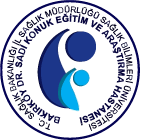ABSTRACT
Conclusion:
Unnecessary drug use can be prevented via the differential diagnosis of the agents by performing stool examination and simple viral tests. The confidence between the family and physician reduces the frequency of the drug use and hospitalization.
Results:
Of the patients, 59.7% were male, 40.3% were female, and the mean age was 65±46 months. The onset of the diarrhea was approximately 3.2±3.9 days before the admission. Vomiting was the accompanying symptom in the 62% of the patients, fever was 44%. Three patients were admitted to our clinic with febrile convulsion. Entamoeba histolytica cysts and/or trophozoids were seen in 46.1% of the stool examination of the patients. Stool cultures of the 18 patients, who were the only performed ones, were negative. The findings of the urinary tract infection were found in 7.4% of the patients. Rotavirus was positive in 26.5% of the patients and adenovirus in 14.7%. Of the patients, 11.7% were treated at the clinic. The drug therapy was given to 65% of the patients. The first choice drug was metronidazole.
Materials and Methods:
In this study, 77 children, brought to our clinic in the months of December, January and February, were evaluated according to their history, stool and urine specimens, blood test results, some clinical features and treatment regimens.
Objective:
The aim of this study was to determine the agents of the winter diarrheas of the children in Elazig region and to investigate the clinical and laboratory features of them.



